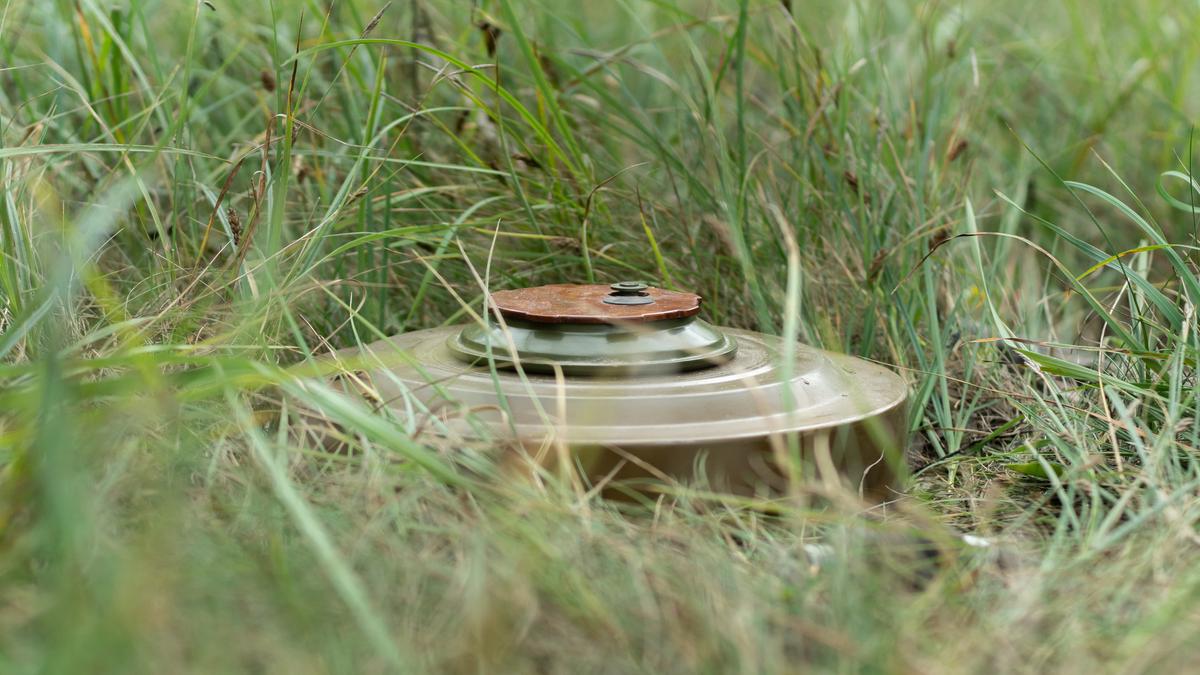Para encontrar objetos enterrados, ya sean explosivos o no, los investigadores crean vibraciones en el suelo y luego lanzan una serie bidimensional de rayos láser hacia él.
Detecting landmines has always been a dangerous and time-consuming task. The critical activity majorly depends on the terrain, and the size of the area. Metal detectors, ground penetrating radar (GPR) and prodders (handheld devices) are some of the methods that are used to detect mines.
Now, researchers have introduced a laser vibration sensing technology that can detect landmines in the ground much faster than previous techniques.
Developed by a team led by Vyacheslav Aranchuk, a specialist in laser sensing at the University of Mississippi, the latest technology can form a vibration map of the ground in less than a second. It uses a 34×23 matrix array of beams – which roughly forms a rectangle.
LAMBDIS can be used from a moving vehicle
Aranchuk’s laser multi-beam differential interferometric sensor, or LAMBDIS, can be used from a moving vehicle, further increasing the speed at which buried landmines can be detected.
To find buried objects – explosive or otherwise – the researchers create ground vibration and then cast a two-dimensional array of laser beams at the ground. Ground vibration induces small variations to the frequency of reflected laser light, which are used to create a vibration image of the area. A buried landmine vibrates differently than the surrounding soil and appears as a red blob in the vibration image, according to a press release.
Aranchuk stated that there are tens of millions of landmines buried around the world, and more every day as conflicts continue. “There are military applications for this technology in ongoing conflicts and humanitarian applications after the conflicts are over,” he added.
Modern mines are made of plastic
Aranchuk also highlighted that most of the modern mines are made of plastic, so they are harder targets for traditional methods of detection that look for metal. “That’s why the National Center for Physical Acoustics, (NCPA) developed this method of detection,” he added.
It’s also claimed that more than 110 million active landmines are deployed worldwide, and landmines or other explosives left behind from previous wars injured or killed 4,710 people in 2022. More than 85% of landmine casualties were civilians, and half the civilian casualties were children.
Landmines’ disposal can cost up to $1,000 per mine
Researchers also claimed that seventy countries worldwide still live with the risk of active landmines each day, including current and former war zones. Landmines are easy to make and can cost as little as $3 apiece, but identification and disposal can cost up to $1,000 per mine to remove, according to researchers.
Boyang Zhang, a former postdoctoral researcher at the NCPA from Nantong, China, stated that metal detectors often generate false positives by detecting any metallic object, and (ground-penetrating radar) can be hindered by certain soil conditions or materials.
“In contrast, laser-acoustic detection uses a combination of laser and acoustic sensing, which allows it to detect landmines from a distance with greater accuracy. It reduces false positives and enhances safety by keeping operators farther from the detection zone,” said Zhang.


